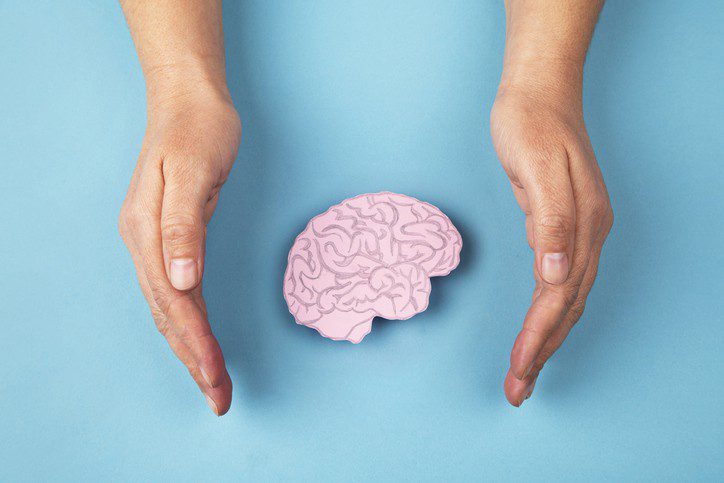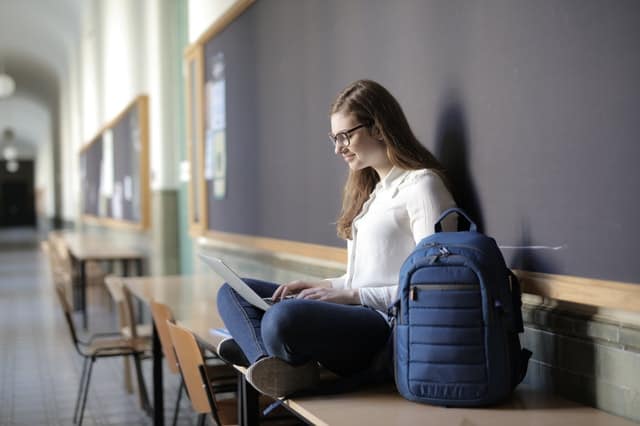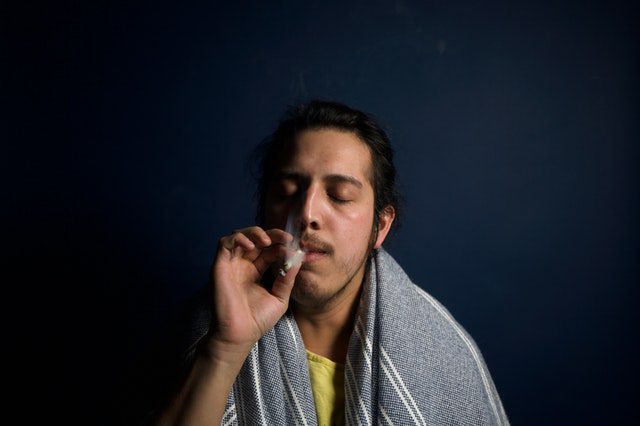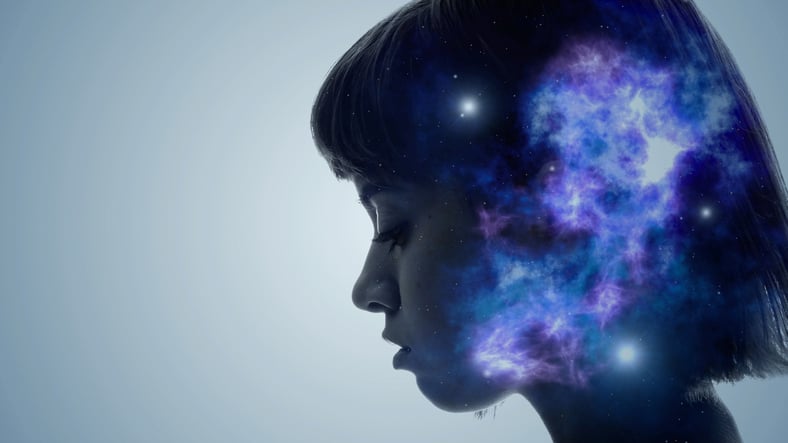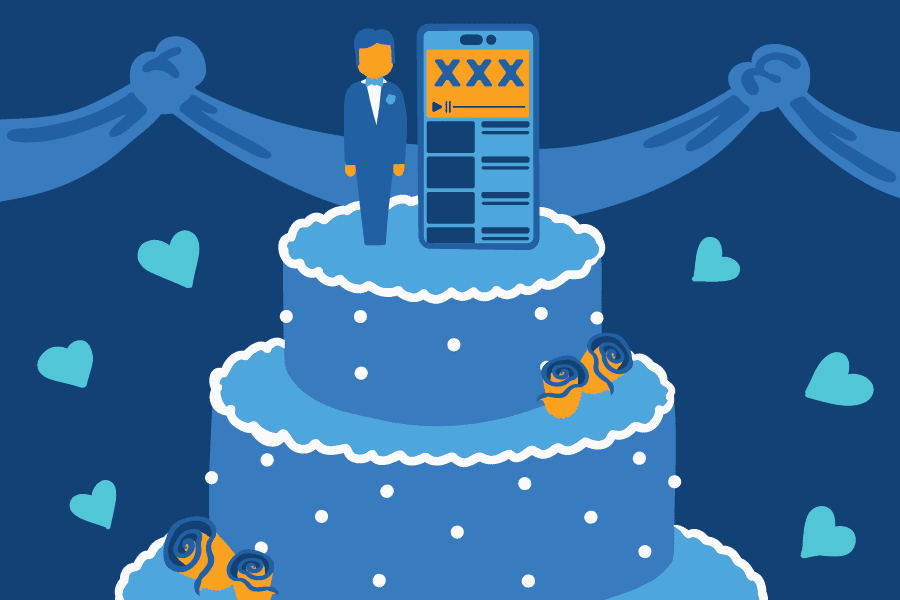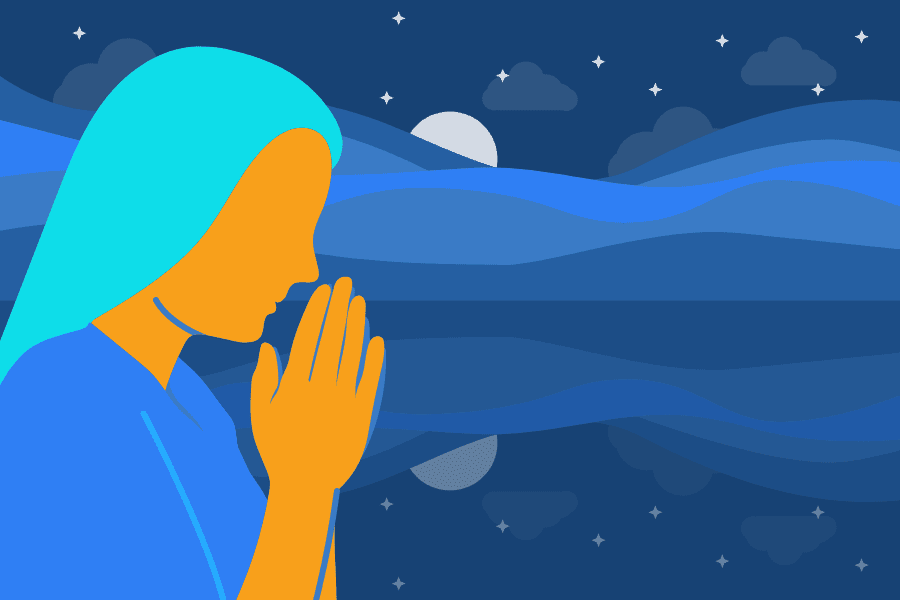Table of Contents
- What Is Cognition In Simple Terms?
- What Are The Three Tiers Of Cognition?
- Are Learning Styles Real? Do Students Learn Differently?
- Can Drugs Cause Learning Disabilities And Does Addiction Affect Learning In Teens And Young Adults?
- How Does Addiction Work In The Teenage And Young Adult Brain?
- What Do Drugs Do To The Teenage Brain And Young Adult Brain?
- How Can Drugs Influence Adolescent Brain Development?
- Can Medication Affect Your Brain In A Negative Way?
- What Activities Release Dopamine In The Brain?
- How Can Healing The Brain Affect Both Short-Term And Long-Term Recovery?
- Can The Brain Recover From Damage And How Long Does The Brain Take To Heal?
What Is Cognition In Simple Terms?
Cognition is another word for your thinking processes.
You can think of your brain like a computer. Cognition is like the computer’s processor. The processor runs in the background at all times. This processor allows you to take information in, store that information, retrieve it, and make sense of it.
Cognition includes the following thought processes:
- Memory
- Association
- Attention
- Recognizing patterns
- Problem-solving
- Decision-making
- Language
- Perception
Substance abuse can damage the neural pathways of the brain responsible for cognitive functions.
Damage or deficits in cognition can lead to impairments in learning and can even impact your mental health. Alcohol and drug abuse can lead to these impairments in brain function, which lead to cognitive issues.
Cognition depends on the development of specific brain structures and neural pathways. The connectivity of brain circuits via neural pathways allows the brain to pass chemicals like dopamine and other “feel good” chemicals within your brain’s reward system.
Neuroscience has proven that drug-taking, alcohol abuse, and other addictive behaviors disrupt cognition and learning.
What Are The Three Tiers Of Cognition?
The three levels of cognition are basic cognitive skills, learning, and executive brain functions.
You can think of cognition as a pyramid of skills, where the basic level supports the higher ones coming next. Without a solid base, the higher-order skills will not develop fully or will be impaired.
The first tier of cognition is the basic cognitive skills, like processing information, attention, short-term and long-term memory, and other basic skills.
Impairments in these basic cognitive areas can cause learning disabilities like dyslexia and ADHD. Some are born with these impairments. These areas can also be damaged by drug and alcohol abuse or traumatic brain injury (TBI).
The second tier of cognition is learning. When you have issues with basic skills, like memory and attention, learning is difficult. To learn, you need learning skills like studying and test-taking.
Without first addressing the basic deficits, you will struggle to get the skills needed to acquire knowledge and learn.
Executive brain functions are the third tier of cognition. These skills are one of the last parts developed in the human brain. Executive skills occur in the prefrontal cortex, and these brain regions develop during teen years and into young adulthood.
Executive functions include things like time management, organization, prioritization, critical thinking, analytical skills, and decision-making.
Impairments at the first tier lead to further issues in building the next two tiers. The basic skills are needed to move into the next tier of learning. When you struggle to learn, you will struggle to make decisions. Building a strong base is crucial to healthy brain development.
Are Learning Styles Real? Do Students Learn Differently?
Learning styles are not real, though cognition can affect how you learn.
The education system is built on the myth of learning styles. Neuroscience, or the study of the brain, shows that the idea of different learning styles is not accurate.
The myth of learning styles means that each person has a preferred way to take in information. For example, some people are visual learners, and others learn best through listening.
This myth of learning styles suggests that you might need to try a different style to get the information if you are not learning a subject. Educators use different methods to teach based on learning styles.
But, what is really happening, is an issue with cognition, not a learning style.
For example, if you have a weak short-term or “working” memory, you might sit in class, take notes, listen to the lecture, yet the information goes “in one ear and out the other.” No matter what you do, you struggle to remember what was just said.
Now, you struggle to take notes because you forgot what was just said. Other people assume you just aren’t listening, so they might try visual learning strategies. But that wasn’t really the problem.
With the impairment of working memory, it doesn’t matter how the information comes in, visually or otherwise. Changing the learning style won’t work. You need to address the issue of a short-term memory deficit and strengthen this cognitive issue.
Can Drugs Cause Learning Disabilities And Does Addiction Affect Learning In Teens And Young Adults?
Yes, drugs can cause learning disabilities, and addiction does affect learning in teens and young adults.
Alcohol and drug abuse affect the brain’s reward system by giving you a “hit” or a “high” by hijacking neurons that release “feel-good” chemicals like dopamine. Substance abuse during the early stages of brain development can impair these areas.
You learn by a reward system of doing what feels good to you. These feelings are from the release of chemicals in the brain. When something feels good, you continue the behavior.
Addictive behaviors and substance abuse get in the way of learning to release these chemicals by goals and activities. When you use substances to feel good, you are not developing the reward circuits in the brain. Without strong neural pathways, you might struggle to learn.
Alcohol and drug use leads to a brain that is not developed fully. Also, substance abuse itself can damage your brain. Damage to neural pathways leads to cognitive impairments. These impairments then lead to learning disabilities.
Learning disabilities can also lead to drug addiction, alcohol consumption, and substance use disorder.
You might be born with a learning disability, like dyslexia or ADHD. When you perform poorer than others in school, you might develop low self-esteem. Drugs and alcohol can be a way to self-medicate for feeling bad due to low self-esteem.
Also, if you have a learning disability like ADHD, you might have less dopamine in your brain. To raise these dopamine levels (which make you feel good), you might turn to drugs and alcohol. Substance use hijacks the brain’s reward system by giving you a release of dopamine.
How Does Addiction Work In The Teenage And Young Adult Brain?
Addiction works in the teenage and young adult brain by activating the reward system of the brain.
According to Dr. Nora Volkow, director of the National Institute on Drug Abuse (NIDA), “Advances in medical imaging have revealed that addiction is a complex disease of the brain.”
Drugs of abuse, whether cocaine, methamphetamine, nicotine, alcohol, cannabis, or others, “activate the reward circuit of the brain,” and “repeated use modifies the function of the prefrontal cortex.”
Legal substances like alcohol can also affect the brain development of young adults and teens.
According to the National Institute on Alcohol Abuse and Alcoholism (NIAA), alcohol dependence and abuse in adolescents “can alter the trajectory of brain development, resulting in long-lasting changes in brain structure and function.”
The reward circuit of the brain is responsible for releasing feel-good chemicals in the brain. Activating the reward circuit from alcohol and drug use leads to wanting and needing more and more substances.
Feel-good chemicals like dopamine and endorphins are neurotransmitters. Neurons release these neurotransmitters when you do something that feels good or to combat pain.
For example, during exercise, the pain from muscle tears triggers the release of endorphins to feel less pain. The endorphins make you feel good, so you continue to exercise to get these neurotransmitters to release.
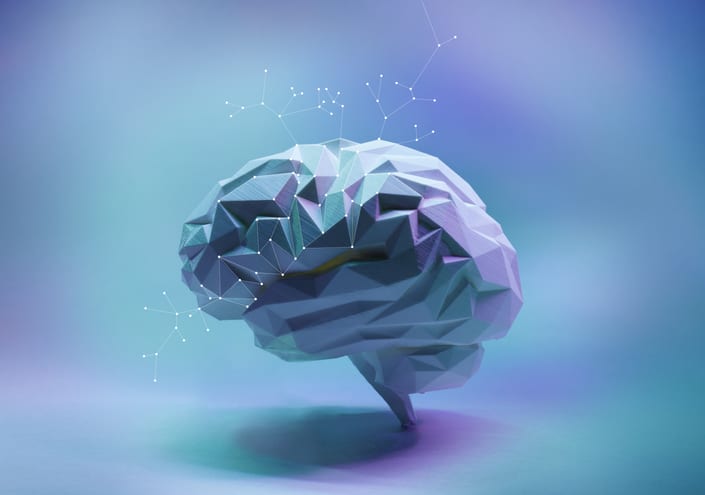
Colorful blue and pink low poly side view human brain with connection dots. Concept of artificial intelligence and machine learning.
These chemicals do not remain in the brain forever and are taken back up. Drug use causes the receptors for these neurotransmitters to flood or to block their “re-uptake.” As a result, you feel good with the rush of dopamine from drugs or alcohol.
The reward system of the brain works by giving you a chemical reward for behaviors. As you get the reward of endorphins or dopamine, the brain gets the message that it needs to continue this action.
Drugs and alcohol hijack the reward system. In the teenage and young adult brains, the reward circuits are being developed. When this system is hijacked, brain development stalls because substance abuse bypassed brain development of other ways of getting these rewards.
You get addicted to the release of neurotransmitters in your brain. Drugs and alcohol are just a quick way of getting those “feel-good” chemicals. Substance abuse during adolescent brain development leads to dysfunction of the reward system.
In other words, substances are the easy way to get the good feelings that you want, but alcohol and drug dependence don’t allow you to learn healthy ways to feel good.
Brain imaging studies show that activation of the reward circuits of the brain is much more sensitive in the adolescent brain than in the adult brain. Substance use at a younger age is higher because these reward systems are much more potent.
Brain development of cortical brain structures, like the prefrontal cortex, occurs into young adulthood. The cortical structures consist of the outer brain regions and are highly developed in the human brain.
Eventually, repeated alcohol and drug abuse change the function of the prefrontal cortex. The prefrontal cortex is a unique feature of the human brain. This brain structure is responsible for “mature” adult behaviors, like decisions, planning, time management, and other areas.
When the prefrontal cortex is impacted during brain development, young adults and teens can struggle with decision-making throughout their lives if they continue abusing drugs and alcohol.
With an underdeveloped prefrontal cortex, young adults can struggle with controlling impulsivity. Drug and alcohol abuse instantly activate the brain’s reward system.
To learn goal-setting and long-term planning, young adults and teens need to learn control over their impulsivity for drug use and alcohol consumption. Activation of the prefrontal cortex requires thinking beyond our immediate needs to gain something better down the road.
What Do Drugs Do To The Teenage Brain And Young Adult Brain?
Drugs have a negative effect on the neural connections in the teenage and young adult brain.
Your brain is part of your nervous system, along with the spinal cord and sensory organs. Sensory organs, like ears, eyes, mouth, tongue, and skin, get information for you about the world. Sensory organs bring information into the brain to be processed.
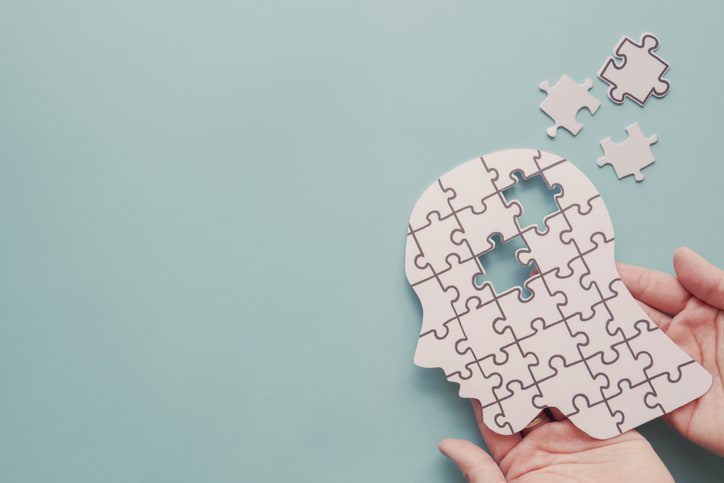
Hands holding brain with puzzle paper cutout, autism, Epilepsy and alzheimer awareness, seizure disorder, world mental health day concept
When something feels good to your sensory organs, your brain releases feel-good neurotransmitters that say, “keep doing this action!”
For example, when eating ice cream, you like the taste on your tongue because your brain releases feel-good chemicals when you eat ice cream. Drugs hijack the release of these chemicals without taking action, other than using drugs or alcohol.
Neurotransmitters are powerful and reinforce whatever behavior releases them. They are crucial to learning what you want and what to do. Neurotransmitters like endorphins are also released to help you feel less pain.
In the teenage and young brain, these sensations are newer. When you first experience something that makes you feel good, the association is strong. You do not know of other ways of feeling good, and you might narrow your actions to one or two things.
Since alcohol and drug use hijack these feelings, you stop looking for other ways to feel good. Since you need these feel-good chemicals to develop cognition, you have impairments of cognition. Then you develop impairments in learning and later in higher-order brain functions.
Without developing the brain circuits responsible for the reward system, teens and young adults might not develop a healthy brain. They are developing a limited number of neural pathways.
A healthy brain is like a paved highway of smooth neural pathways. When drugs and alcohol hijack neural connections, you don’t develop as many pathways, and the pathways are not smooth. Some substances can even damage these pathways, like potholes in a road.
How Can Drugs Influence Adolescent Brain Development?
Drugs can influence adolescent brain development by damaging neural connections.
Alcohol and drug-related neural damaging affects cognition, like memory, attention, and planning.
Drugs influence the connectivity and communication within the brain. The effects of drugs can lead to problems with cognition, as the brain does not develop properly when substances hijack the brain’s reward system.
Methamphetamine and cocaine use can be especially damaging to the brain. Cocaine blocks dopamine from being “recycled” by the brain synapse by blocking the dopamine receptors. Over time, drugs of abuse like cocaine damage the neurons and neural pathways.
Can Medication Affect Your Brain In A Negative Way?
Depending on the type of medication, the amount used, and how long the medication is used, medications can affect your brain in a negative way.
Since psychiatry is the practice of prescribing medications to treat mental illness, you need to consider the pros and cons of using medications. Often, the pros outweigh the cons when using medications for mental health issues.
Pharmacological treatment is effective for neurobiological and psychiatric disorders. Pharmacotherapy treats mental health and substance abuse by prescribing medications.
However, any medication has the potential to help or harm. When medications are used in a way that is not prescribed, the side effects can cause damage to the brain.
For example, anti-seizure medications are designed to block neurons from connecting. Even if the medication is necessary, blocking neural connections can lead to damage.
Pain medications, like opioids, can also have a negative impact on the brain.
“Opioid” is a broad term to describe substances that bind to opioid receptors in the brain. These substances include synthetic opioids, like fentanyl, and opioids from flowering opium plants like heroin and morphine (opioids from natural sources are called “opiates”).
The body produces opioids naturally to activate the opioid receptors in the brain. Activation of the opioid receptors from drugs of abuse like heroin can be more potent than the naturally occurring opioids the body produces.
When teens and young adults are prescribed opioids for pain, the medication might be misused and lead to addiction. Opioid drugs activate the opioid receptors in the brain. Opioid addiction is currently a public health crisis in the United States.
Teens and young adults have a high-risk factor for addiction to opioids, even if they are taking prescription opioids.
Abusers of opioid medications might engage in drug-seeking behavior, where you might feign symptoms for a new prescription or see multiple doctors for prescriptions for the same drug. If you can’t get the prescription, you might seek out street drugs, which can be dangerous.
With any medication, you always want to look at the pros and cons. Some medications might have side effects, yet they help with bigger issues. When medications have severe side effects, you should talk to your doctor or psychiatrist about your concerns.
Some medications might only need to be used temporarily. You can gradually reduce the amount of medication overtime or try new medications with fewer side effects. These are some options to minimize harmful side effects.
Pharmacotherapy can also be used to treat issues like cannabis use disorder and other drug addictions.
Medications like methadone and naltrexone might be prescribed as part of Medication-Assisted Treatment (MAT). These medications are used to help the detoxification process so that a person can begin the recovery process.
Clinical trials of methadone show that methadone can be helpful in the short term for recovery from heroin. Naltrexone, though helpful for opioid and alcohol use disorders, has harmful side effects that inhibit long-term use.
However, medications like methadone and naltrexone used to treat substance and alcohol use disorders are not meant to be used long term. Rather, they help you get through detoxification as you build new skills to recover.
Talking to your health care practitioner about your concerns is best regarding psychopharmacology to treat addiction and mental illness. You might be able to gradually get off of these medications to reduce your risk factors of damaging the brain.
The human brain has what neuroscience calls “plasticity.” Plasticity means that your brain can repair the damage done by medications and other drugs. You can recover what was lost during active drug addiction.
Dysfunction of neurons and other neurobiological structures of the nervous system can heal and repair during addiction treatment. Addiction treatment can be similar to physical therapy of a broken arm.
The nervous system is healed through building new neural pathways and strengthening connections in the brain’s reward system through healthy behaviors. As you engage in healthy behaviors, you learn new ways to activate dopamine and opioid receptors in the brain.
What Activities Release Dopamine In The Brain?
Many activities can release dopamine in the brain.
The brain’s reward system helps you learn new things by giving us a reward of dopamine when you do something that makes you feel good. Some of these things make you feel good at the moment, like eating or working out.
Other activities to release dopamine include:
- Exercise
- Socializing
- Meditation
- Creative activities, like art
- Exploring the outdoors
- Listening to music
Other lifestyle changes to increase dopamine include healthy eating and sleeping habits.
Being mindful of your overall health care will increase your brain’s functioning. You can reduce the impact of withdrawal from drug and alcohol dependence during detoxification by including physical health activities in your addiction treatment.
As your brain develops and you understand long-term consequences, your brain improves in decision-making. While immediate “feel-good” chemicals are powerful, you will seek better things in the long term.
How Can Healing The Brain Affect Both Short-Term And Long-Term Recovery?
Healing the brain during detoxification can affect both short-term and long-term recovery.
During addiction treatment, the brain begins to heal when new neural connections are formed, and damaged connections are repaired. Detoxification rids your brain of harmful substances that have caused impairments in important brain functions.
One thing that happens is the “foggy” feelings go away. You can start to think more clearly and have more energy. When cognitive skills return, you start thinking better. When you think better, you can learn the skills needed to stay sober in recovery.
Once a young adult or teen starts doing better in school, they can see a path to success. Then, you are less likely to go back to alcohol or drug use. Success builds self-esteem, self-esteem creates dopamine, and the reward system begins working properly again.
Damaged neural connections also leave you vulnerable to develop comorbidity of psychiatric disorders and substance abuse. Neurobiology and mental health are connected. With poor cognition, you might make bad choices that lead to depression or other mental disorders.
You can now think of better choices to make that are helpful to your mental health. Any improvement to your mental health will help you from self-medicating with alcohol consumption or drug use.
When you have better decision-making skills, you can get out of other situations that lead to alcohol and substance use disorders.
For example, environmental factors like your community and home can impact your exposure to drugs and alcohol. Making better choices regarding your environment can help your addiction treatment and recovery.
Can The Brain Recover From Damage And How Long Does The Brain Take To Heal?
The brain can recover from damage, though how long and how much damage can be healed depend on how the brain was damaged.
Brains are a part of the body and can recover from injury. The damage done during brain development from substance abuse can reverse itself over time. Substances can block the healing process. While sober in recovery, these substances no longer block healing.
Detoxification of substances and alcohol begins the healing process. During detoxification, the brain can begin to function optimally again.
The length of time that it takes to heal depends on the substance used and for how long. For example, methamphetamine and cocaine use might take longer to detox than alcohol or cannabis use.
However, the length of time and amount of substance used can add to recovery. For example, daily alcohol consumption might take longer to recover from than once a week binge-drinking.
For teens and young adults, getting support and intervening soon will help them from doing too much damage during brain development.
Addiction and substance use disorders are treatable conditions, and you can heal the damage done. Brain plasticity is especially prevalent among young adults and teens.
Addiction treatment and recovery that occurs earlier during the young adult’s brain development can prevent many of these neurobiological issues from getting worse.
Substance use can influence brain development and cognition in teens and young adults. Recovery is possible to reverse the negative effects that drugs and alcohol have on the brain. Sandstone Care is here to help. Call us today at (888) 850-1890.


